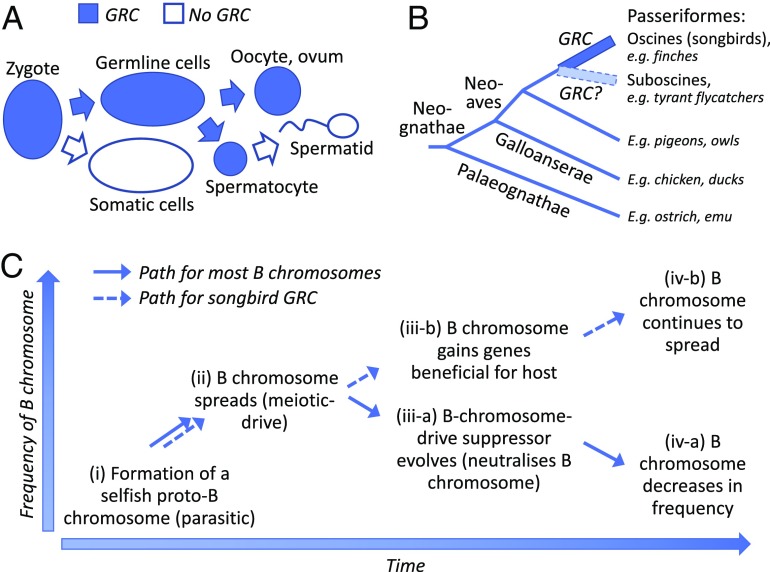Fig. 1.
(A) Schematic outline of the life cycle of a GRC that is transmitted via oocytes and eliminated from somatic cells and spermatids (8–10). (B) A phylogeny of birds indicating the GRC of songbirds (oscine passerines) (11). (C) A possible scenario for the evolutionary dynamics of B chromosomes in general and of the songbird GRC in particular (3, 4, 11). (i) Formation of a proto-B chromosome, i.e., a harmful selfish genetic element that possesses a meiotic-drive mechanism. (ii) The B chromosome increases in frequency in the population due to the drive. (iii-a and iv-a) Selection favors the evolution of B chromosome-drive suppressors that neutralize the B chromosome (iii-a), and the B chromosome is eventually lost from the population by genetic drift (iv-a). (iii-b and vi-b) The B chromosome gains genes that are beneficial for the host (genes involved in germ-cell development) (iii-b) and increases further in frequency and eventually becomes fixed (iv-b).

